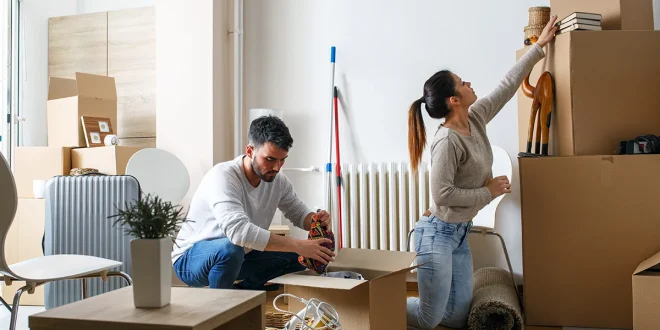Whether this is your first move or you’ve moved a thousand times before, switching residences can be extremely stressful. There are numerous moving parts to consider, and you have to coordinate between landlords, movers, and your own busy schedule. The good news, though, is that there are several helpful packing tips for moving that will make your life ten times easier during this transition period.
Pack Efficiently
The first step to moving into a new apartment is moving out of your old one. Try to start packing early so you don’t have to worry about it right before the move, when you’re most likely to get overwhelmed. There are also some ways that you can reduce the stress of your move by making the most of your packing strategy.
For example, you can use newspaper or socks to protect your breakable items instead of going out and getting packing peanuts or fancy moving materials. Also, consider using press-and-seal products to seal your dresser drawers and keep your clothes inside. You’re moving the dresser anyways—no use in taking the clothes out just to put them right back in again. Another handy tip is to take photos of electronics and the cords that go with them, so you’re not confused with a mess of wires when it comes time to plug them all back in.
It’s important also that you have all your packing done prior to when your friends or movers show up. Besides showing common courtesy, it’s crucial that you complete your move quickly since most movers are charged per hour. Make the most of your money by being prepared.
Movers will typically provide a dolly, furniture sliders, and covers to ensure that none of your items are damaged in the move. Further, they are insured in case of accidental damage, so you will be recompensated for any damage. Also, if they damage the property itself while moving (e.g., scratched walls or appliances), they will coordinate with your landlord and be held liable. This is a huge pro for hiring movers, since you don’t want to be responsible when your clumsy cousin Sarah accidentally damages a doorframe or your brand-new glass side table while helping you move-in.
Document, Document, Document
Before you move in, make sure you take pictures of your empty apartment and all the existing damage you see. This is important because upon move-out, your landlord will inspect your unit to determine whether they need to keep any of your security deposit to fix damages you may have caused. When you take photos and document the damage caused by prior tenants, you are ensuring you don’t get charged for their negligence.
Also, you most likely will receive an inventory and condition form from your landlord. This form will allow you to write down the existing damage you see in your new rental. If possible, you and your landlord should complete this form together, so you’re both on the same page about the current condition of your new home. This will increase your chances of getting your security deposit back when you move out, since your landlord has seen the existing damage with their own eyes. It’s also a great way to get to know your new landlord and create an open line of communication with them about the property.
You could also schedule a walk-through with your old landlord about a week before you move out of your apartment. That way, they will be able to tell you exactly what you need to do to get your old security deposit back, which you can use for the deposit on your new unit.
Talk to Your Landlord
When preparing to move, there are a lot of questions you may have about your new apartment or house. What if you can’t find the parking garage, or are wondering whether the pool welcomes guests? These are questions your landlord would be happy to answer.
Before you show up at your new place, get some common logistical questions out of the way by asking your landlord about parking passes, general move-in protocol, and when you expect to arrive on move-in day. They will hopefully be forthcoming with this information, making any potential issues dissipate before they occur.
Conclusion
Moving doesn’t have to be stressful. With the proper amount of preparation and communication, switching rentals can be a breeze. Make sure you always read your lease carefully and pay extra close attention to any fine print regarding move-out requirements, since that could impact your ability to retrieve your security deposit. Your new lease will have info on your responsibilities as a tenant in that specific apartment, so be sure to review it and go to your landlord with any questions you may have.
 Isaiminia World Breaking News & Top Stories
Isaiminia World Breaking News & Top Stories




